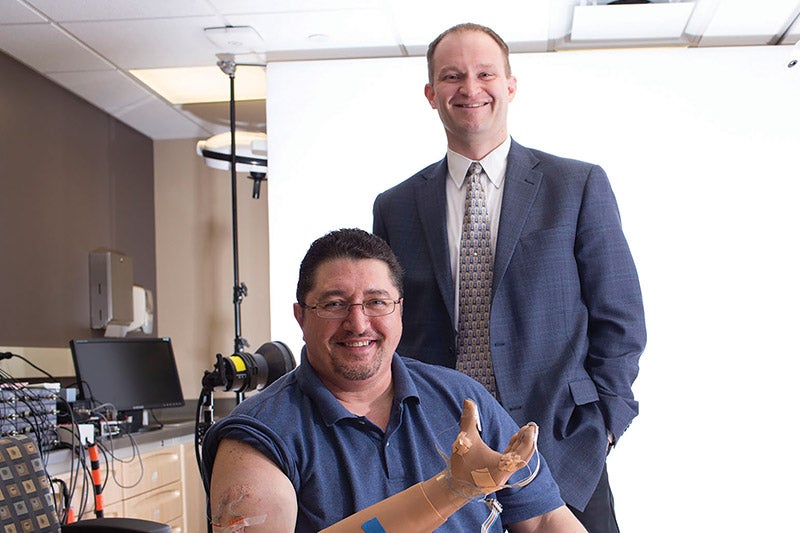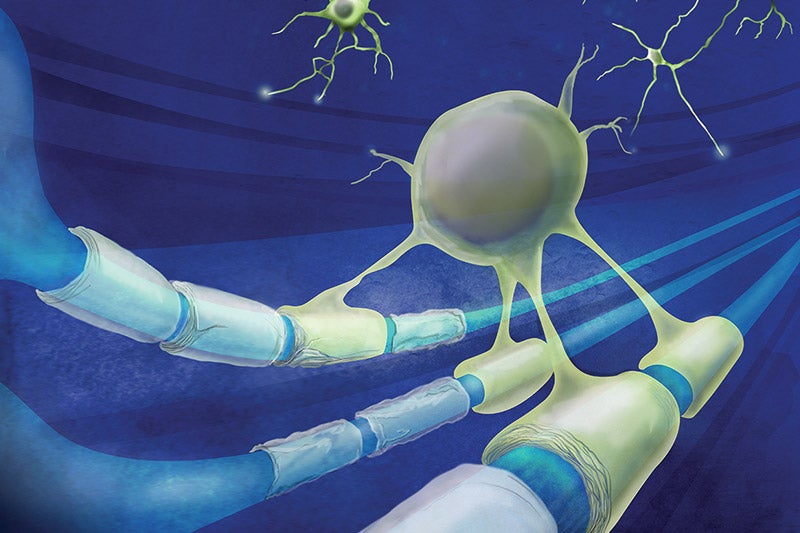
Discovery
Professor +Patient= Real Feeling
For someone who’s lost a limb, a prosthetic is invaluable. But it falls well short of an actual replacement. Biomedical Engineering Associate Professor Dustin Tyler understood. With colleagues on campus and at the Louis Stokes VA Medical Center, he created a system to restore severed connections—among the body, the mind and the world. Through the dedication of former industrial worker Igor Spetic, Tyler and his team learned how to bring human feeling to artificial fingertips. Now Spetic can hold a cherry tomato without crushing it. Spread mayonnaise without tearing the bread. He can even feel his wife’s hand. Tyler next will take the system out of the lab. Spetic can’t wait to have it 24/7. Once refined, the system could bring the sense of touch to legions more. Imagine the impact on hands—and hearts.
A Perfect Triangle
When two scholars needed help, each turned to one person: Music Professor Ross Duffin. Duffin did more than provide an expert eye—he offered extraordinary answers. First, he deciphered a misunderstood lyric in Shakespeare’s Love’s Labour’s Lost. Then he analyzed a Cleveland Museum of Art engraving that had been accepted as showing Orpheus; he suggested it actually featured Leonardo da Vinci portraying the musician of myth. Neither discovery would have happened without the original findings—or Duffin’s willingness to help.
A Multi-Pronged Attack on MS
When medical school faculty member Paul Tesar decided to take on multiple sclerosis (MS), he knew he’d need help. Tesar recruited the best minds he could find, including ones beyond this campus. Together, they discovered that two common medicines—one for athlete’s foot and another for eczema—also may be able to direct stem cells to reverse MS damage. Next steps include transforming the topical medications for internal use, and conducting clinical trials. Still, the initial results are so promising that this much already is clear: Team science works.
Married to their work
When spouses Katherine and Tim Krynak—she a doctoral candidate in biology and he a Cleveland Metroparks projects manager—traveled to Ecuador for a collaborative research, they were drawn to a tiny rain frog. Or was it two? In fact, the animal can transform—going from spiky to smooth skin in response to its surroundings. The discovery makes the Krynaks the first to find an amphibian able to change texture.
Doubling up on Discovery
The 55,000-year-old partial skull unearthed in Israel was a discovery in itself. But orthodontics faculty Mark Hans and Bruce Latimer thought the bones might have more to tell. The answer even surprised them: The skull offers the earliest evidence yet that modern humans and Neanderthals may have crossed paths 15,000 years earlier—and in a different location—than previously thought. Now that’s putting your heads together.




